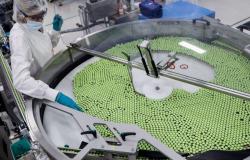Neuralink, the neurotechnology company founded by Elon Musk, recently reached another milestone with receiving “breakthrough device” designation from the Food and Drug Administration (FDA) for its latest project Blindsight. This innovative device aims to restore vision to blind people, including those born without the ability to see. While this announcement sparks excitement, it also raises ethical and scientific questions about how the technology is developed and presented to the public. Blindsight is based on technology for implanting an array of microelectrodes into the brain’s visual cortex, an area responsible for processing visual information.
By stimulating these neurons, the implant would allow patients to perceive images, even if their optic nerve is damaged or absent. Musk said the technology could even allow people blind from birth to see for the first time. However, as Musk himself pointed out, expectations must be measured. Initially, the vision obtained will be comparable to low-resolution graphics, similar to those of Atari video games from the 80s. In the long term, Musk imagines an improved vision that would make it possible to see spectra invisible to the human eye, such as infrared or ultraviolet. This futuristic perspective, although fascinating, remains hypothetical and depends on future technological advances.
The blurred boundaries of scientific transparency
Despite technological promise, Neuralink faces criticism over its unconventional approach to scientific research. Contrary to established norms in the medical field, the company chose to disseminate its results primarily through social media and live demonstrations on YouTube and X. This method has caused unease in the scientific community, which traditionally relies on conferences and publications in peer-reviewed journals to validate findings. Furthermore, Neuralink clinical trials raise questions about the protection of participants and their informed consent. The choice to publish fragmentary information while making big promises could influence patients’ perceptions of the real benefits of the technology.
BAlthough Neuralink has received support from the FDA to accelerate the development of Blindsight, this approval does not mean that the device is already safe or effective for widespread use. The FDA’s “breakthrough device” program aims to foster innovation in areas where no therapeutic alternatives exist, but it imposes rigorous safety standards before any release on the market. Additionally, the company has already faced calls for greater oversight, particularly after being sanctioned for violations related to the transportation of hazardous materials. These incidents are a reminder that technological innovation must be accompanied by strict compliance with safety regulations, especially when testing on human beings is involved.
If Blindsight achieves its goal, this technology could radically transform the lives of millions of people affected by blindness. However, an important question remains: who will have access to this technology? The high costs associated with these advanced devices risk limiting access to wealthier patients, widening inequalities in medical care. In addition, the lifespan and long-term maintenance of these implants represent a major issue. If Neuralink stops supporting these devices in the future, equipped patients could end up with outdated technology in their brains.





